Horns are found on many different types of animals, and they serve a variety of purposes. Some animals use their horns for self-defense, while others use them to attract mates or to show dominance over other members of their species. Still, others use their horns to dig for food or to help them navigate through dense vegetation. Thus, horns are definitely an interesting and useful adaptation. In this article, you will learn about all the animals with one horn.
Table of Contents
1. Rhinoceros Beetles
Scientific name (tribe): Oryctini
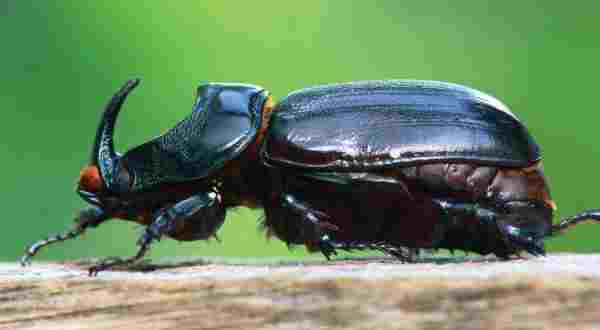
At first glance, all rhinoceros beetles may seem similar. However, upon closer inspection, there are some subtle differences between the various species. The European rhinoceros beetle is one of the largest insects in Europe, and it is easily distinguished by its massive horns. By contrast, females of the Asian rhinoceros beetle also have horns, albeit shorter ones. The purpose of the horns is still debated by scientists, but it is believed that they play a role in establishing dominance and attracting mates.
2. Horned Silkworm/Silkworm Moth
Scientific name: Bombyx mori

Some caterpillars have horns, such as the Horned Silkworm and the Giant Silkworm Moth. These horns are used to intimidate predators and make them think twice about attacking. The Horned Silkworm’s Horn is actually harmless and is used primarily for show.
3. Cassowaries
Scientific name (genus): Casuarius

Cassowaries are unique among birds in that they possess a casque, or helmet-like cap, on their head. This casque can grow up to seven inches in length, is made of bone, and is covered with keratinous material. It has been suggested that the primary function of the casque is to serve as a resonating chamber, amplifying the cassowary’s low-frequency calls. However, the casque may also play a role in sexual selection, as males with larger casques are more likely to win mates. The casque may also help to protect the bird’s head from collisions.
4. Narwhals
Scientific name: Monodon monoceros
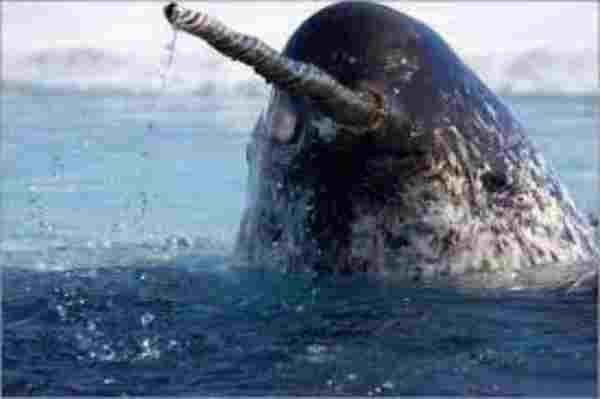
One of the most recognizable characteristics of this unusual animal is its horn. The narwhal horn, often known as a tusk, is the biggest horn on any single-horned animal, growing to a length of 10 feet.
It’s very rare to find a 2 horned narwhal. It could be 1 in 500 of those. Scientists think that narwhals use their horns to establish dominance and attract mates; they are not utilized for combat.
Narwhals utilize their horns to seek fish in addition to using them in social interactions. Millions of nerve endings cover the horns, allowing narwhals to communicate with one another by rubbing them together.
5. Naso Fish
Scientific name (genus): Naso
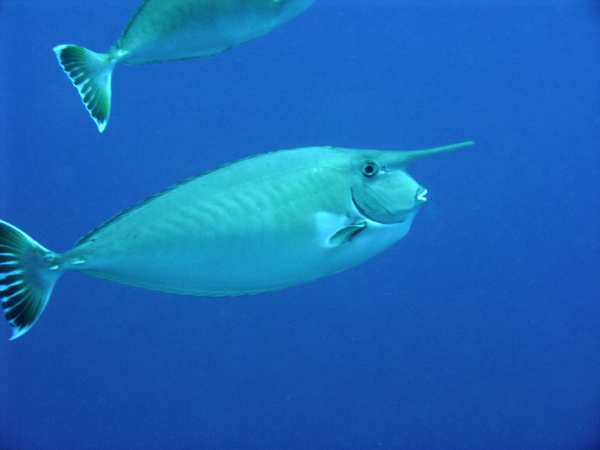
A horn on the top of the head distinguishes naso fish from other species of fish. The length of the horn is thought to be utilized to assert dominance among other Naso fish and to entice mates. Naso fish may change the color of their horns to bring attention to themselves. Two species, Naso unicornis and Naso vlamingii are capable of doing this. These fish can be found in tropical or subtropical seas all over the world.
6. Unicorn Crestfish
Scientific name: Emmelichthys fiski
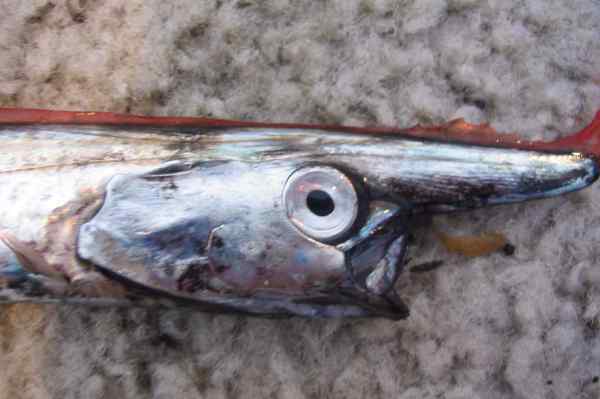
The Emmelichthys genus is home to only one species of fish – the crestfish. These creatures are easily recognizable due to their distinctive horn, which protrudes from between their eyes. Although they are relatively rare, they can be found in waters all around the world, typically at depths of around 3300 feet.
Little is known about the purpose of the horn, but it is believed that it may help the fish to attract mates or defend itself against predators. Crestfish are also equipped with ink tubes, which it uses to shoot a jet of black fluid when threatened. This allows the creature to escape from predators and find safety in the darkness of the deep sea.
7. Rhino-horned Lizard
Scientific name: Ceratophora stoddartii
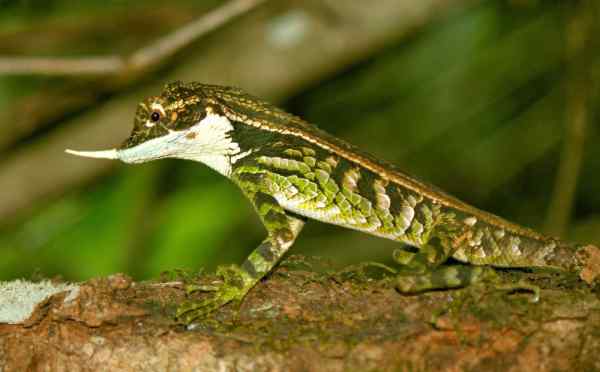
The rhino-horned lizard is a small, weird reptile with one very noticeable feature: a horn. Measuring about two-thirds the length of the animal’s snout, the horn is used for a variety of purposes, including deterring predators and attracting mates. While most horns are found on male lizards, females also occasionally sport them. However, it’s not uncommon for females to have smaller or no horns at all.
The rhino-horned lizard, a Sri Lankan native, has received little attention from scientists. Because of this, there is still a lot to learn about these tiny organisms.
8. Javan Rhinos
Scientific name: Rhinoceros sondaicus

Javan rhinos and Indian rhinos are similar in many ways, but yet there are some important distinctions between them. One of the most notable is size; Javan rhinos are often smaller than their Indian counterparts. This difference is also reflected in the size of their horns; Javan rhinos have the smallest horns of any rhino species, with a length that rarely exceeds 8 inches.
Female Javan rhinos on the other hand lack horns altogether, while all Indian rhino females have them. Another key difference is the purpose of the horn; while Indian rhinos use their horns primarily for self-defense, Javan rhinos primarily use them for scraping mud off of their bodies.
9. Indian Rhinos
Scientific name: Rhinoceros unicornis
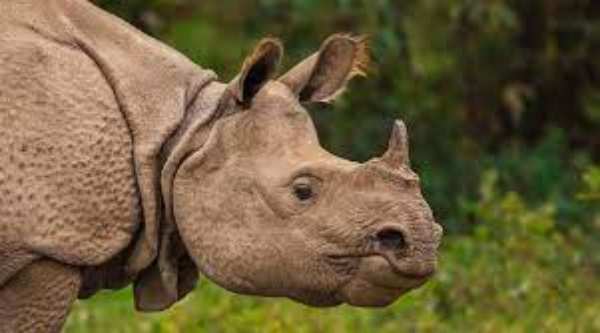
The single horn of Indian rhinos, which is frequently longer than 9 inches, makes them the largest creatures with a single horn. Self-defense is the main function of the horn, yet Indian rhinos don’t have any natural enemies. After about six years, the keratin-based horn begins to grow.
Indian rhinos can weigh as much as approximately 7 pounds. Indian rhinos can weigh up to1 7 pounds and their single horn has a length of 9 inches. The biggest recorded horn length is 14-inch in the biggest rhino.
Read about the Indian rhinoceros coverage in the Hindu for more information.
The shape of the horn can also vary depending on the individual rhino. Some horns are more curved, while others are straighter.
10. DEER (SOMETIMES!)
Scientific name: Cervidae

In general, deer are born with two horns or antlers. However, in some rare instances, a deer may be born with only one horn or antler. This unique physical characteristic has garnered attention from nature lovers around the world.
Recently, a Roe deer in Italy caught the eye of many for its single horn coming out of its head. Although this may give the deer a unicorn-like appearance, it is likely due to a rare genetic mutation. In almost all cases, deer do not resemble unicorns but instead have the usual two horns or antlers.
FAQs
What animals have a single horn?
The only land animal with a single horn is the Rhinoceros Unicornis, sometimes known as the larger one-horned rhino.
What animal has a straight horn?
The horns of an oryx are long, straight, and slender.
Which animal has a single horn on its forehead?
Unicorn
What animals have 3 horns?
Triceratops
What fish has a horn on its head?
Narwhals
Read our other Hippo blogs below:
- What Animals Eat Fish? (18 Fish Eating Animals With Pictures)
- How to Survive a Hippo Attack | 5 Tourist Survival Tips
- Hippo vs Tiger | Who Would Win in a Fight?
- Polar Bear vs Hippo: Who Would Win in a Fight?
- What do Hippos Eat? Diet and Feeding Habits
A motivated philosophy graduate and student of wildlife conservation with a deep interest in human-wildlife relationships, including wildlife communication, environmental education, and conservation anthropology. Offers strong interpersonal, research, writing, and creativity skills.










